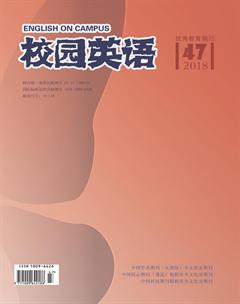Relationship between Writing in L1 and Writing in L2
【Abstract】This essay addresses relationship between writing in L1 and writing in L2 with references made to Chinese writing and English writing. Writing strategies and language competence in L1 and L2 are highlighted as areas in which research into writing in a second language can and does inform classroom practice.
【Key words】Relationships; L1; L2; Writing Strategies; Language Competence
【作者簡介】李思红,红河学院。
1. Introduction
One significant challenge of the second language (L2) writing process is that it involves all of the elements included in the first language (L1) writing process – producing content, drafting ideas, revising writing, choosing appropriate vocabulary, and editing text, jumbled with second language processing issues. The purpose of this essay is to explore the relationship between writing in L1 and writing in L2 with references made to Chinese writing and English writing. It focuses on the complexity of L2 writing and the interplay of issues such as writing strategies and language competence that must be addressed by teachers and learners who approach writing in a second language.
2. L1 Writing Strategies Transfer to L2 Writing Process
One widely accepted claim is that literacy development in L1 shares a common underlying proficiency with literacy in L2 (Cummins, 1981). Take Chinese English learners as an example. Most L2 learners from Chinese educational backgrounds have had writing instruction since primary school. A variety of writing strategies were included in their Chinese writing curriculum such as generating ideas, planning, elaborating ideas, revising and editing. So when these learners are involved in L2 writing, notably writing in English, in order to prevent a complete breakdown in language, they are most likely to apply their L1 writing strategies to assist them in the writing process. Furthermore, the use of Chinese, facilitates more abstract thoughts during planning. During the actual writing process, when they are unable to think of a right word or run out of ideas mid-sentence, they use the same Chinese writing strategies to reread what has been written down, occasionally make revisions, and rehearse words to match the idea. In this sense, the use of L1 helps L2 learners become more effective writers.
3. L1 Language Competence Plays a Part in L2 Writing
Most Chinese EFL learners start their formal English study at the age of 13, a period when they have developed language competence in Chinese at a comparatively mature level. To some extent this becomes a driving force for Chinese EFL writers to write in English. It is especially helpful for low English proficiency level writers, given the fact that “one-to-one” equivalent, either at a word level or at a sentence level, is very often found in Chinese and English writing contexts. However, there are vast differences in terms of linguistic features between Chinese and English. For example, a distinct characteristic of Chinese language is the structure of short sentences. Chinese L2 writers, especially lower proficiency writers who dont have sufficient level of English, will depend heavily on the L1 to drive the L2 writing process. They will transfer their knowledge of sentence-forming from Chinese to English, which is characterized by the intensive use of relative clauses.
4. Conclusion: Pedagogical Implications
As discussed above, since many L2 writers who have already developed solid writing strategies in their L1 tend to use their L1 in some way while writing in the L2, we as language teachers should allow learners, especially at the elementary level, to select L1 writing strategies that match their individual preferences and writing styles to assist them in their L2 writing. In addition, in order to accelerate the acquisition of overall language fluency, L2 writing instruction should contain not only writing instruction, but also language instruction in reading, listening, speaking, grammar, vocabulary, and cross-cultural thinking skills.
References:
[1]Cummins,J.The role of primary language development in promoting educational success for language minority students.In Schooling and language minority students:A theoretical framework[D].Office of Bilingual Education,California Sate University,1981.

